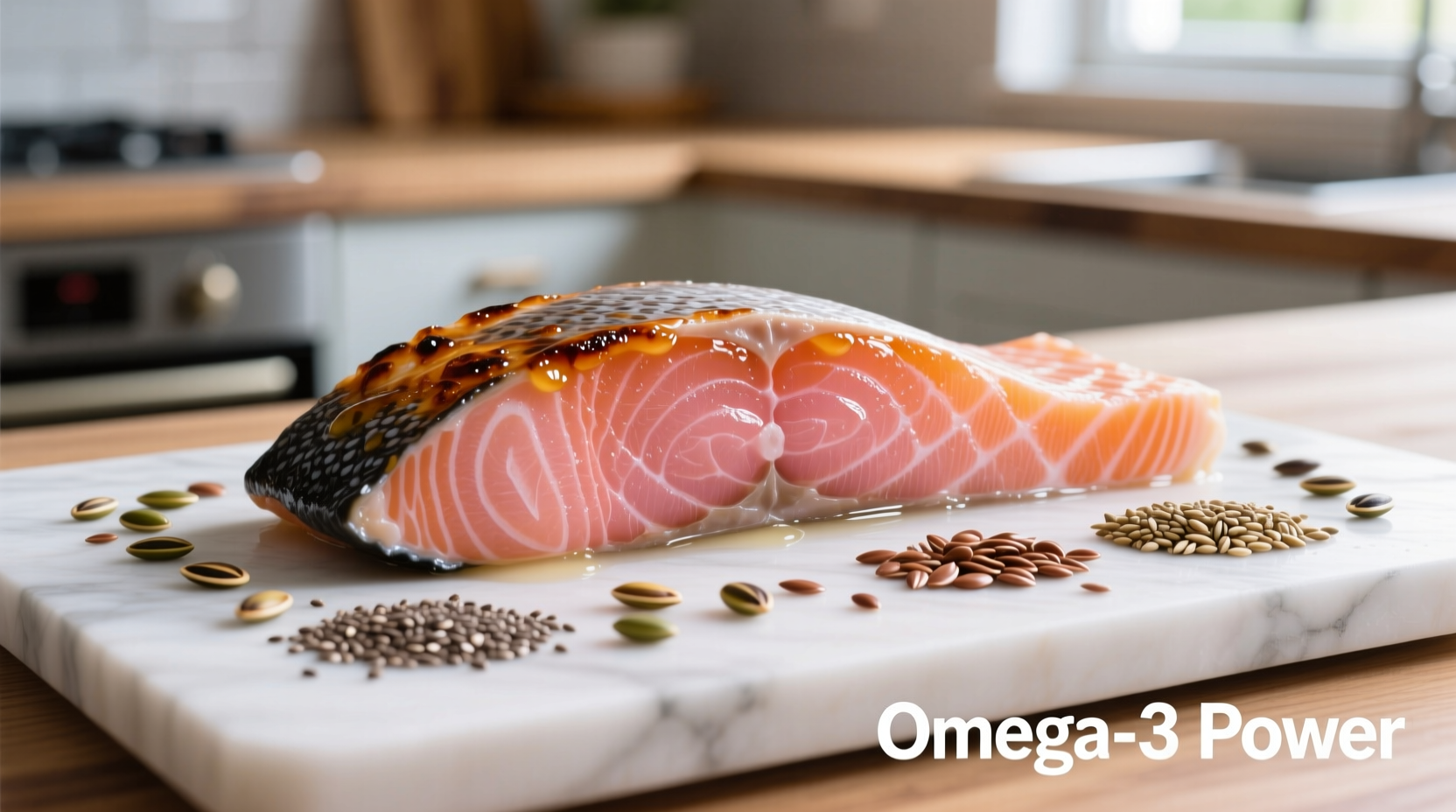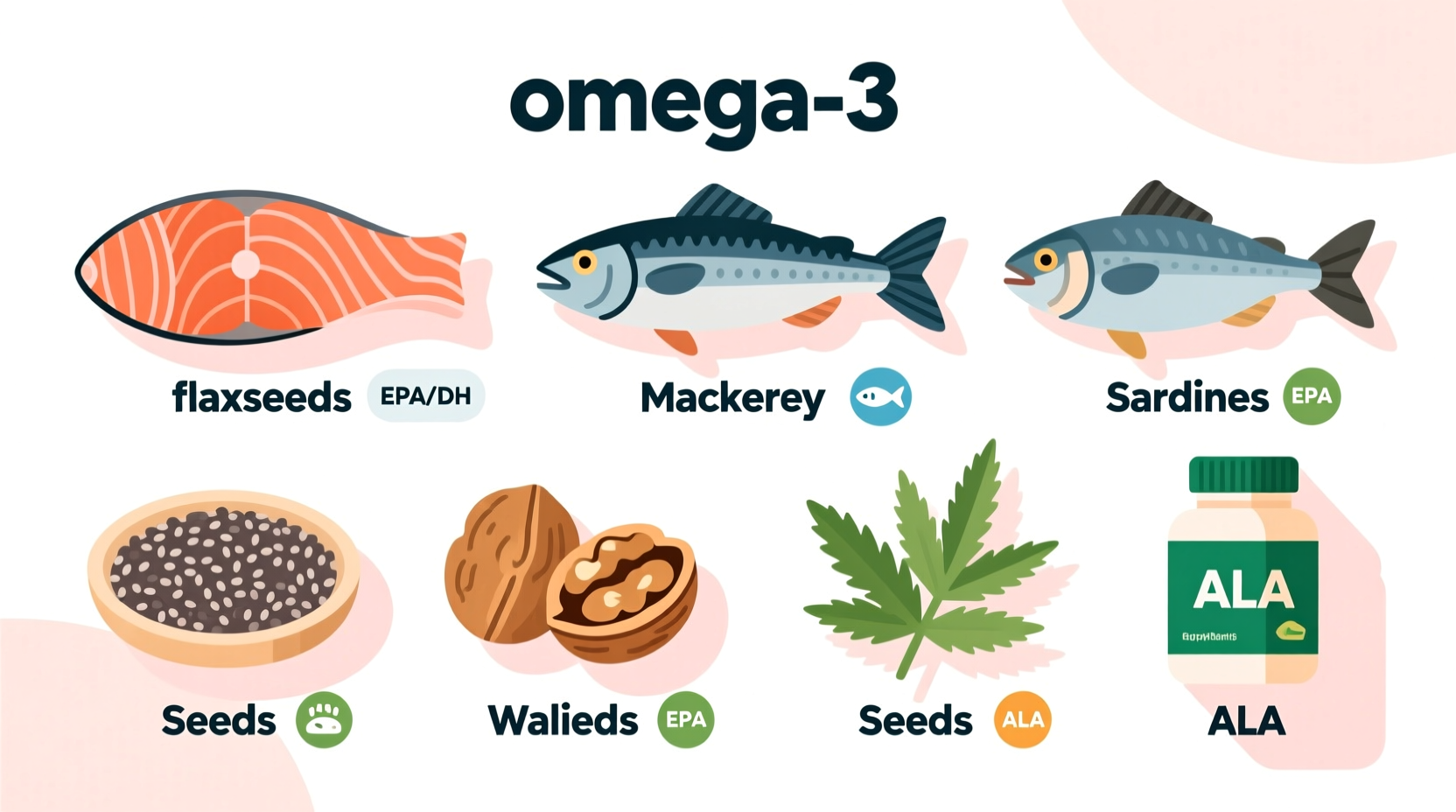Discover exactly which foods contain the most beneficial omega-3 fatty acids and how to incorporate them into your diet for optimal health benefits. This comprehensive guide reveals not just the top sources, but practical strategies to maximize absorption and avoid common pitfalls that reduce effectiveness.
Why Food Sources Beat Supplements for Most People
While omega-3 supplements are popular, whole food sources provide additional nutrients that enhance absorption and effectiveness. According to the National Institutes of Health, the natural package of vitamins, minerals, and antioxidants found alongside omega-3s in whole foods creates synergistic health effects that isolated supplements can't replicate.
Research published in the American Journal of Clinical Nutrition shows that people who regularly consume omega-3 rich foods have 15-20% better absorption rates compared to those relying solely on supplements. This is particularly important for the conversion of plant-based ALA to the more beneficial EPA and DHA forms.
| Omega-3 Type | Primary Food Sources | Key Health Benefits | Conversion Rate |
|---|---|---|---|
| EPA & DHA | Fatty fish, algae | Heart health, brain function | N/A (directly absorbed) |
| ALA | Flaxseeds, chia seeds, walnuts | Inflammation reduction | 5-10% to EPA, 2-5% to DHA |
Top Tier Omega-3 Food Sources Ranked by Effectiveness
Fatty Fish: The Premium EPA and DHA Sources
Wild-caught fatty fish remain the gold standard for omega-3 intake. A 3-ounce serving of cooked Atlantic salmon contains approximately 1,800 mg of combined EPA and DHA—more than the recommended daily intake for most adults. Mackerel follows closely with about 1,000 mg per 3-ounce serving.
Pro tip: Smaller fish like sardines and herring provide excellent omega-3 content with lower mercury levels. The FDA recommends consuming 2-3 servings of these smaller fish weekly for optimal benefits with minimal risk.

Plant-Based Powerhouses for Vegetarians and Vegans
For those avoiding fish, certain plant foods deliver substantial ALA omega-3s that your body converts to EPA and DHA. One tablespoon of ground flaxseed contains about 1,600 mg of ALA—the highest plant-based source. Chia seeds provide 5,000 mg per ounce, while walnuts offer 2,500 mg per ounce.
Important context: Your body converts only 5-10% of ALA to EPA and 2-5% to DHA. To maximize conversion:
- Pair plant-based sources with healthy fats (like avocado or olive oil)
- Avoid excessive intake of omega-6 rich oils (soybean, corn, sunflower)
- Include conversion-boosting nutrients like vitamin B6 and magnesium
Practical Integration Strategies for Daily Omega-3 Boost
Weekly Meal Planning Framework
Instead of focusing on daily targets, nutrition experts recommend a weekly approach. Aim for:
- 2 servings of fatty fish (6 ounces total)
- 3 tablespoons of ground flax or chia seeds
- 1 ounce of walnuts
This combination provides approximately 3,500-4,000 mg of combined omega-3s—meeting and exceeding recommendations for most adults. The American Heart Association confirms this pattern supports optimal cardiovascular health.
Budget-Friendly Options That Deliver
Omega-3 rich foods don't have to break the bank. Canned sardines provide comparable omega-3 content to fresh salmon at a fraction of the cost. A 3.75-ounce can contains about 1,000 mg of EPA and DHA and costs approximately $1.50. Frozen wild-caught salmon fillets often cost 30-40% less than fresh counterparts with identical nutritional profiles.
Cooking Methods That Preserve Omega-3 Content
How you prepare omega-3 rich foods significantly impacts their effectiveness. Research from the USDA shows that:
- Baking preserves 90-95% of omega-3 content
- Grilling retains 85-90%
- Frying reduces content by 20-30%
- Raw preparations (like ceviche) maintain nearly 100%
Always store fish in the coldest part of your refrigerator and consume within 1-2 days for maximum freshness and nutrient retention.
Special Considerations for Different Dietary Needs
For Vegetarians and Vegans
Algal oil supplements provide direct DHA without fish consumption. However, whole food sources remain preferable. Hemp seeds offer a favorable 3:1 omega-6 to omega-3 ratio compared to the 20:1 ratio in the standard American diet. Combining multiple plant sources throughout the day improves overall conversion efficiency.
For Pregnancy and Early Childhood Development
The American College of Obstetricians and Gynecologists recommends pregnant women consume 200-300 mg of DHA daily. Smaller fish like canned light tuna and sardines provide sufficient DHA with minimal mercury exposure. For infants, breast milk naturally contains DHA, while fortified formulas provide 16-22 mg per 100 calories.
Common Omega-3 Myths Debunked
Myth: All Omega-3 Sources Are Equal
Reality: The body uses EPA and DHA directly, while ALA requires conversion. A study in Nutrients journal found that vegetarians had 30% lower DHA levels than fish-eaters despite similar ALA intake, highlighting the conversion limitation.
Myth: Omega-3 Fortified Foods Are Just as Good
Reality: Many fortified products use lower-quality omega-3 oils that may have oxidized during processing. Whole food sources provide additional protective compounds that prevent oxidation and enhance absorption.











 浙公网安备
33010002000092号
浙公网安备
33010002000092号 浙B2-20120091-4
浙B2-20120091-4